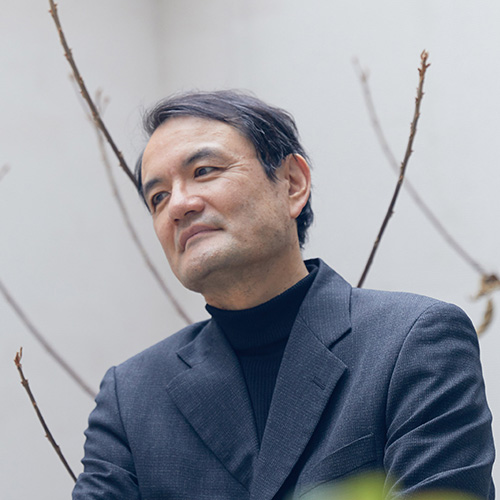contents
Director
Director's Message
In any generation, cutting-edge science and design stand side by side. New knowledge and technologies generated by researchers are delivered through design. Conversely, new lifestyle options opened up by designers trigger research. There are differences, for the fundamental purpose of science is the pursuit of truth, while design aims at realization of fruitful experiences in a flourishing society. The two fields do not always share a common path, so that while standing together there is also something insurmountable between them.
The relationship of scientific research and design is intrinsically tense. There have been fresh encounters, conflict and drama. At many historical moments this very friction has led to innovations that completely changed our lives, like motor cars, electric appliances, computers, smart phones, or SNS.
This exhibition explores what we term "Future Elements." It investigates things that we believe are about to flourish through interaction of research and design. Since 2001, in collaboration with cutting-edge technological experts, we have produced prototypes suggestive of future lifestyles. After I took up a professorship at the University of Tokyo in 2013, we established "Design-Led X" to give concrete form to innumerable technologies not previously rendered functional and interface with researchers in search of future value.
Exhibition "Future Elements: Experimental Laboratory for Prototyping in Science and Design" gathers a series of novel encounters, focusing with my activity as the core. It is a collaboration between creators and researchers from various fields.Researchers in robotics, three-dimensional printing, structural morphology, human augmentation and bioengineering, on the one hand, and designers and artists on the other, teamed up for the exhibition to forge "Future Elements." Our outputs are not limited to science fiction-like plots, but contain real-life stories experienced with concrete materiality and movement. Visitors to the exhibition are invited to connect these elements, fresh from laboratories, and draw their image of a world yet to be seen.
Shunji Yamanaka
Profile

Shunji Yamanaka
Born in 1957. After graduating from the Faculty of Engineering at the University of Tokyo, he worked as a car designer at Nissan Motor Co., Ltd. From 1991 to 1994, he served as an associate professor at the University of Tokyo. In 1994, he founded Leading Edge Design. Yamanaka is a product designer known for designing a wide range of products, including wristwatches, furniture, and railway vehicles. He has also collaborated with scientists to create advanced prototypes such as humanoid robots and 3D-printed prosthetic legs for athletes. Also, he is famous for designing the common user interface for IC card ticket gates, used nationwide in Japan. He became a professor at Keio University in 2008 and at the University of Tokyo in 2013. In 2023, he was awarded the title of the University Professor at the University of Tokyo. He has received numerous awards, including inclusion in the permanent collection of the New York MoMA, the Good Design Award Gold Prize, the Mainichi Design Award, and the Best of Bast of Red Dot Design Award, A'Design Platinum Awards and many others.

